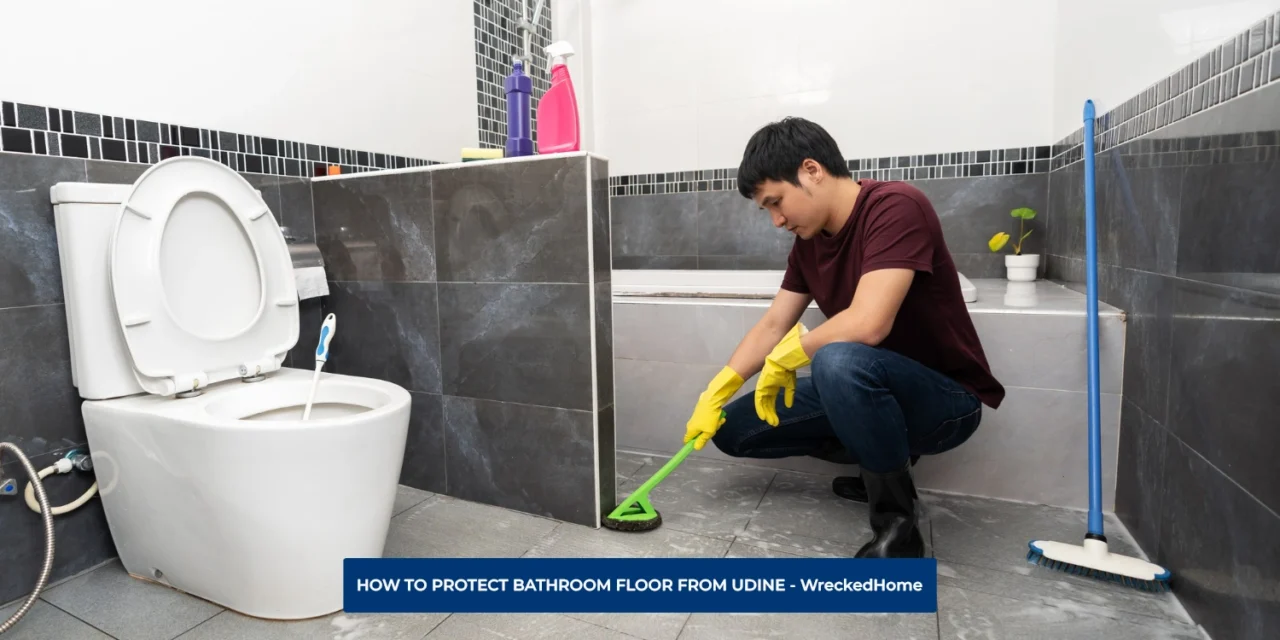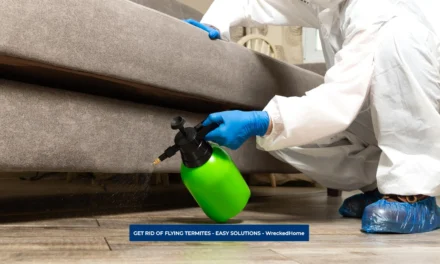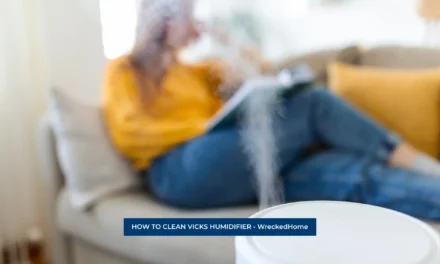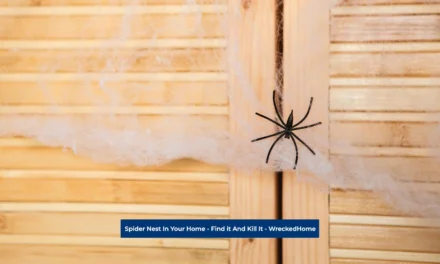Bathrooms are essential places in homes and offices that often face a silent yet persistent adversary: urine damage to the floor. One common reason for bathroom floor damage is due to urine which impacts both the cleanliness and longevity of the bathroom area. The bathroom is a frequently used area that brings with it the potential for accidental spills and splashes, leading to unsightly stains of urine, odors, and even structural damage over time.
The importance of addressing how to protect bathroom floor from urine goes beyond aesthetic considerations because hygiene is the paramount concern in any living space. The accumulation of urine on bathroom floors can pose health risks due to the growth of bacteria and unpleasant odors that also can strain budgets.
By proactively addressing this issue, individuals not only maintain a clean and healthy living environment but also ensure functionality and aesthetics for the long term. In this guide we will elaborate effective ways on getting urine off your floor, ensuring a harmonious balance between hygiene, longevity, and the overall well-being of living spaces. Let’s get started in the journey of protecting the bathroom floor from urine!
- Why is it necessary to protect bathroom floor from urine
- HOW TO PROTECT BATHROOM FLOOR FROM URINE
- 1. Anti-Urine Flooring: A Trio of Protective Solutions
- 2. Urine-Proof Rugs: Combining Comfort and Protection
- 3. Urine Splash Guards: Barrier Against Unwanted Splashes
- 4. Disposable Mats: Convenient and Effective Urine Protection
- 5. Installing a Base Plate: Fortifying the Toilet Perimeter
- 6. Washable Toilet Floor: Simplicity and Hygiene Combined
- 7. Sealing the Base of the Bowl: A Strategic Defense Against Urine Damage
- Conclusion
- FAQs (Protecting The Bathroom Floor From Urine)
Why is it necessary to protect bathroom floor from urine
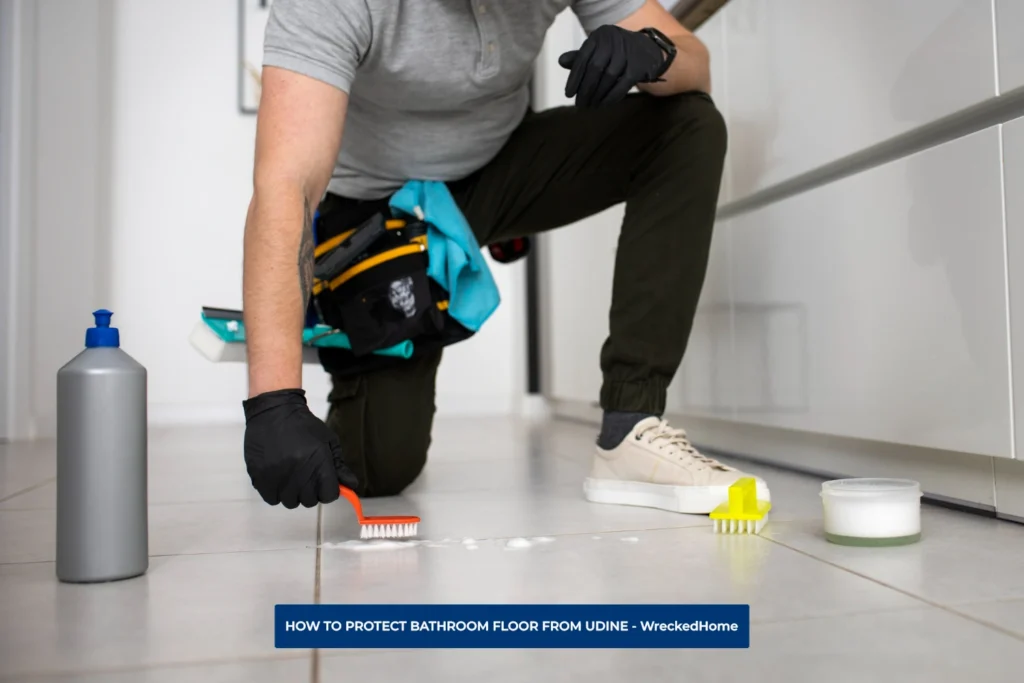
Protecting the bathroom floor from urine is not just a matter of aesthetics; it also matter of hygiene and safety. Here are five compelling reasons that unveil the importance to protect the bathroom floor from urine:
- Hygiene and Health: The bathroom is a breeding ground for bacteria that can lead to unpleasant odors and pose health risks. Protecting the bathroom floor from urine is essential to stop the bacterial growth and the associated health hazards. A protected floor contributes significantly to overall bathroom cleanliness and longevity.
- Prevention of Structural Damage: Urine is not just a surface-level concern; it can lead to structural damage over time. Many bathroom floors are constructed with materials like wood or laminate, which are particularly susceptible to damage with the penetration of urine. By implementing protective measures, such as waterproofing or urine-resistant coatings, individuals can enjoy longevity and prevent from costly repairs or replacements.
- Odor Control: Urine, when allowed to accumulate on bathroom floors, can emit unpleasant odors that create an uncomfortable living environment but can also be embarrassing when hosting guests. Learning this minimizes the chances of odors lingering. Washable floors play a crucial role in odor control, enhancing the overall experience of using the bathroom.
- Aesthetic Maintenance: Unattractive stains and discoloration caused by urine can mar the aesthetic appeal of a bathroom. Protecting the floor from urine ensures that the visual integrity of the space is preserved. Whether through the use of urine-resistant rugs, splash guards, or easy-to-clean materials, it contributes to the comfort and satisfaction derived from the living space. Buy our Toilet Brush Here!
- Financial Considerations: The financial implications of neglecting the bathroom floor can strain household budgets. By investing in preventive measures such as urine-resistant coatings, disposable mats, or a washable floor you can protect the bathroom floor from urine and maintain the overall value of the property.
Protecting the bathroom floor from urine is a multifaceted necessity, to create a safer, cleaner, and more durable bathroom environment.
HOW TO PROTECT BATHROOM FLOOR FROM URINE
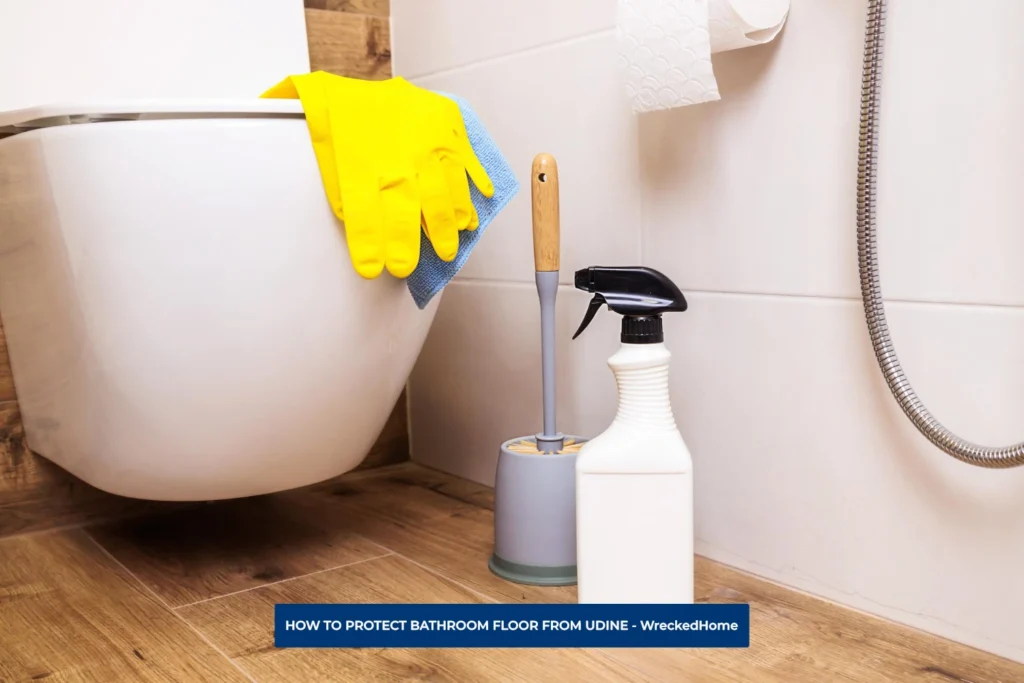
With frequent use of the bathroom, there is always the question on how to remove urine. Maintaining the integrity of your bathroom floor is essential with preventive measures against urine to avoid unpleasant odors, structural issues, and aesthetic concerns. Below you will find the different ways of protecting the bathroom floor from urine.
1. Anti-Urine Flooring: A Trio of Protective Solutions
Anti-urine coatings stand at the forefront of innovative solutions that create a protective shield, preventing urine from permeating and causing long-term harm to the flooring materials. There are some of the anti-urine flooring options that bring a unique set of benefits, from resilience to design flexibility.
- Tiles: Ceramic or porcelain tiles stand as a good choice for anti-urine flooring creating a barrier against urine to prevent penetration and offering a durable solution.
- Vinyl: Vinyl flooring emerges as a resilient option due to the synthetic composition and waterproof properties. Vinyl effectively repels urine, ensuring minimal absorption.
- Laminate: Laminate flooring; with its layered construction puts advancements in laminate technology including water-resistant options. When it is properly sealed and maintained, laminate acts as an anti-urine protection to offer affordability with aesthetic versatility.
Designed for versatility, anti-urine coatings contribute to the overall cleanliness of the bathroom by reducing the growth of bacteria and preventing unpleasant odors. Homeowners can choose from a range of anti-urine coating products as a forward-thinking investment in the long-term health and aesthetics of your living space.
2. Urine-Proof Rugs: Combining Comfort and Protection
Urine-proof rugs emerge as a practical and stylish solution to this issue with specialized materials designed to resist urine absorption, ensuring comfort and protecting the underlying flooring.
When selecting a urine-proof rug, consider that those with a waterproof backing act as a barrier, preventing urine from seeping through and reaching the sub floor beneath. Beyond their protective features, urine-proof rugs come in various colors, patterns, and sizes that allow homeowners to personalize their space with added floor protection.
Urine-proof rugs are especially beneficial in areas around toilets or spaces providing defense against accidental leaks, providing a soft and comfortable surface that complements the functionality of the bathroom.
Incorporating urine-proof rugs into your bathroom decor not only elevates the visual appeal, it offers a stylish solution to the common challenge of urine-related damage in the bathroom.
3. Urine Splash Guards: Barrier Against Unwanted Splashes
Urine splash guards prove to be a crucial addition around the base of the toilet, act as a strategic barrier to prevent urine from reaching the floor and causing potential harm to flooring materials.
Available in various designs and materials detach urine splash guards offering flexibility, allowing for easy removal and cleaning, while permanent fixtures ensure continuous protection with minimal maintenance.
The primary function of a urine splash guard is to intercept and redirect urine, reducing the likelihood of structural damage and the need for extensive cleaning.
4. Disposable Mats: Convenient and Effective Urine Protection
Disposable mats emerge as a versatile and convenient solution for a temporary yet effective barrier that can be easily replaced as needed. Perfect for areas prone to urine exposure, disposable mats provide a quick and hassle-free prevention from seeping into the floor and causing stains or odors.
The convenience of disposable mats is particularly useful in households with high traffic bathrooms or during events where multiple individuals may be using the facilities. Their cost-effective nature make them a practical choice and adds a layer of defense against urine damage without the need for complex installations.
5. Installing a Base Plate: Fortifying the Toilet Perimeter
There are some of the areas that are more vulnerable to urine stains, installing a base plate creating an additional layer of defense against accidental spills and leaks. In those situations, protecting the bathroom floor from urine is paramount.
These plates are designed to encircle the toilet and act as a barrier with a tight seal. It keeps the urine away from the area that is easy to wash.
The installation process is easy for homeowners looking to remove urine, and can be done without hiring professionals. Whether using adhesive backing or secure fastenings, it is minimizing the risk of urine reaching the floor keeping your bathroom long lasting.
6. Washable Toilet Floor: Simplicity and Hygiene Combined
Every material is not washable that’s why it is recommended to opt with washable material such as tiles or vinyl that can withstand the occasional spills.
The key advantage of a washable toilet floor is that you can wipe it after use. Regular cleaning with mild detergents and a Microfiber Towel helps maintain a hygienic environment that also hinders the sticky stains on the floor.
Their resistance to water damage is an important addition in modern lifestyles, where convenience and efficiency are paramount. Incorporating this type of flooring into your bathroom is contributing to the long-term well-being of their bathroom.
7. Sealing the Base of the Bowl: A Strategic Defense Against Urine Damage
Sealing the base of the toilet bowl is an effective way to prevent urine from seeping through vulnerable areas, offering a targeted solution to potential damage.
You can do it by applying waterproof sealants around the base of the toilet bowl. Regular inspection and reapplication of the sealant are essentials of getting urine out of your bathroom to minimize the risk of long-term damage that also reduces the unpleasant odors.
Conclusion
The bathroom is key part of daily life; therefore the significance of protecting the bathroom floor from urine is both an immediate concerns and long-term consideration. From innovative solutions like anti-urine coatings to practical choices like washable toilet floors there are key aspects that can help you to remove urine stains and smells.
To prevent the bacterial growth is necessary for a harmonious living space. The art of bathroom protection lies not just in selecting one method but in the well-being of your living space ensures the hygienic and resilient living space.
If you cannot remedy this situation after following the tips in this guide, please call a professional. Find A Pro Near You Here!
FAQs (Protecting The Bathroom Floor From Urine)
1. How do you clean urine from the floor around a toilet?
Prepare a solution by mixing 8 ounces of hydrogen peroxide with 3 tablespoons of baking soda in a spray bottle then use it on your toilet gently. Add a few drops of dish soap to enhance its cleaning and spray it to rest approximately 15 minutes. Afterwards, rub the solution into the stained area then wash with water that tackles stains and odors.
2. How do I keep my floor clean under my toilet?
To maintain cleanliness under your toilet, start by using soap and water. Use a scrubbing brush to clean it properly. After cleaning, apply a strong disinfectant, such as bleach that not only cleans but also disinfects, creating a sanitary environment around your toilet.

